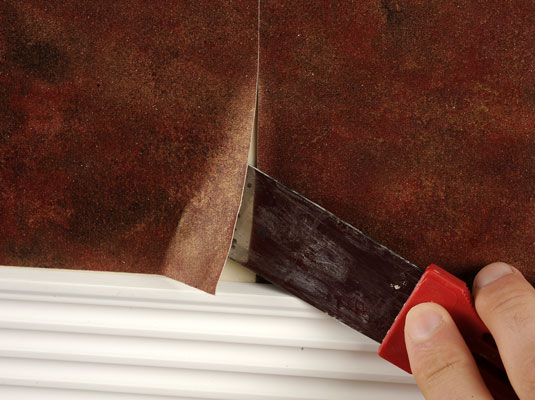Dry-stripping wallpaper is the easiest method of taking off wallpaper — you essentially just peel it off. To dry-strip wallpaper successfully, the wall underneath would had to have been thoroughly sealed before the wallpaper was applied.
By sealing the wall first, the wallpaper glue sticks to the sealant instead of the wall itself. When the adhesive sticks to the sealant, it’s easy to just pull it right off the wall.
Dry-stripping requires only a putty knife to loosen the edges of the paper.
Loosen the wallpaper strip at the corners with a putty knife.

Loosen each strip at the corners with a putty knife.
Slowly peel back the wallpaper at a 10- to 15-degree angle.

If you pull the wallpaper straight out, you may damage the underlying surface, especially if it’s drywall.
Remove all the wallpaper and backing.

Follow the same procedure to remove all the rest of the wallpaper and its backing. If only the top, decorative layer peels off, leaving a paper backing behind, you may need to wet the wallpaper and scrape it off or use a wallpaper steamer to remove it all.
Wash the walls with a solution of wallpaper removal solvent.

Use a large sponge or sponge mop and wallpaper removal solvent (following manufacturer’s directions) to wash off any remaining adhesive residue. You can also use a nonphosphate cleaner in water.
You can use an abrasive pad or steel wool to help you remove the adhesive residue on plaster, but use caution on drywall. Avoid overwetting or abrading the cardboard facing on the drywall.
Rinse your sponge often in a separate bucket of water, squeeze it out, and continue rinsing your walls until all the residue and remover solution are gone.




